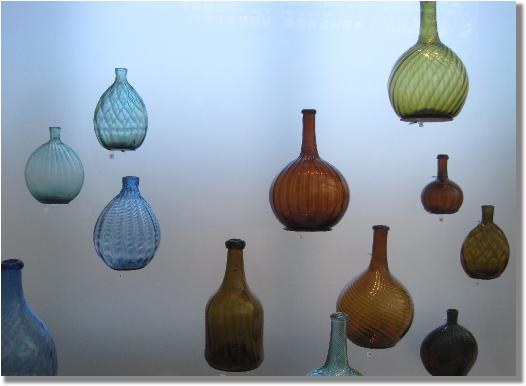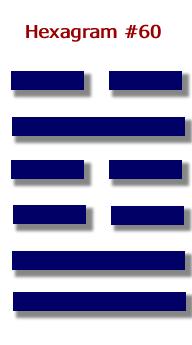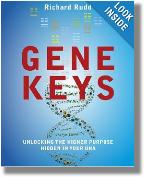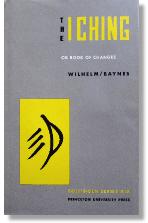 |
|

Glass bottles, Metropolitan Museum of Art.
 Class Eight: Auspicious Coincidence. Please study this page with Audio Lecture Eight.
Class Eight: Auspicious Coincidence. Please study this page with Audio Lecture Eight.
Part I: (File: I Ching and Human Body 8.mp3)
Complete Openness, Natural Perfection, Complete Spontaneity: Rigdzin Shikpo - his given/family name was Michael Hookam - studied with Chögyam Trungpa in the late 1960s in England and was, in fact, one of Rinpoche's first students. What follows below are excerpts from a recording Rigdzin Shikpo made in which he recalls some of the first and most pithy teachings he received from Chögyam Trungpa. Rigdzin Shikpo's presentation of complete openness, natural perfection and absolute spontaneity is virtually identical to the text Maha Ati that Chögyam Trungpa later gave to his American students. These teaching are for me a foundation for Vertical time yoga.
- The first aspects of the teachings was what he called complete openness. He said this is the way that you had to act to everybody and to every situation you encountered, you had to be completely open, without having prejudice mind and you had to train yourself in that particular way.
- It’s not just a question of things of being open, which one might interpret perhaps as some kind of ultimate emptiness, but that things form some kind of coherent pattern just naturally, and this he called natural perfection. There isn’t anything that is not significant and not valuable. The important thing in one’s life and in ones behavior was to see this kind natural patterning and to go with that, not in the sense, again, of indulging in it, but to be able to experience it and to open out to it.
- The third aspect was to allow the quality of absolute spontaneity to arise. Absolute spontaneity isn’t really something that you can say, “I’m going to be spontaneous”; that of course wouldn’t make any sense, and you can’t in any way make spontaneity happen, of course, but it is possible to lay some kind of ground for that spontaneity to arise.
- it was possible in the general experience of one’s life and one’s Buddhist practice to make those three things a complete unity, and then if you do that you have the experience of what is called the tree of life. That everything that arises has something of significance or value, that nothing in your life is to be considered, as it were, an accidental event, everything had to do with dharma, everything is the living dharma, as he would sometime say, on that on this day the dharma wants me to do this particular thing, or the dharma wants me to do - that is something that obviously you have to find out for yourself - but his idea was that dharma was alive with these three particular qualities and that was the basis for him for the whole of the dharma and this particularly the formless meditation.
It is particularly in the notion of "what does life" or the dharma want me to do on a given day that I find the I Ching so useful and essential. What to do is not only an activity, of course, but is fundamentally a quality to bring forth, such as abundance, development or inner truth.(hexagrams 55, 53 and 61).

#60 CHIEH. Limitation
Discipline – Being able to be joyful even in trouble; practicing obedience in trying circumstances, adaptable, keeping to the Tao. Articulating. Confused relations; making limits and connections clear, particularly through speech. Articulate: separate and distinguish, as well as join different things; express thought through speech; joint, section, chapter, interval, unit of time, regulations, limits; zodiacal sign, lit: nodes on bamboo stalk. Ideogram: none mentioned.
Human Design: Gate of Acceptance.
Physiology: Colon
Gene Keys: Shadow: Limitation Gift: Realism Siddhi: Justice
On Limitation: In Either/Or, Soren Kierkegaard has his poet-protagonist write an essay on "The Rotation Method" in which he distinguishes between two modes of existence. In the first,
One tires of living in the country, and moves to the city; one tires of one's native land, and travels abroad; one tires of Europe and goes to America, and so on; finally one indulges in the sentimental hope of endless journeyings from star to star. Or the movement is different but still extensive. One tires of porcelain dishes and eats on silver; one tires of silver and turns to gold; one burns half of Rome to get an idea of the burning of Troy. But this method defeats itself, it is plain endlessness.
...and here is the second method:
My own method does not consist in such a change of field, but rather resembles the true rotation method in changing the crop and the mode of cultivation, rather than the field. Here we have the principle of limitation, the only saving principle in the world. The more you limit yourself, the more fertile you become in invention.
Either/Or, trans. David and Lillian Swanson, Doubleday Anchor, pg 287-288
Gene Key 60:
Shadow: Limitation. This shadow cuts down one's life-receiving faculties. Distrust of the flow of life. Enless laws, rules and red-tape that stifle  innovation and creativity. Rigidly holding to structure, unable to see that all structues, though necessary in their time, pass. Leads to the death of magic, with is mutative, unpredictable and uncontrollable. Even the body is a structure (for consciousness) that will pass. Clings to the past, abhors the new. Religeous dogmas are among the most repellant and enduring expressions of this clinging. Limitation is expressed, of course, in our thinking, which becomes the death of magic. Repressive expression: Unstructured. Reactive expression: Rigid.
innovation and creativity. Rigidly holding to structure, unable to see that all structues, though necessary in their time, pass. Leads to the death of magic, with is mutative, unpredictable and uncontrollable. Even the body is a structure (for consciousness) that will pass. Clings to the past, abhors the new. Religeous dogmas are among the most repellant and enduring expressions of this clinging. Limitation is expressed, of course, in our thinking, which becomes the death of magic. Repressive expression: Unstructured. Reactive expression: Rigid.
Gift: Realism. Understanding the limitations of the world of form and therefore to know the laws of manifesting within the world of form. To balance idealsim with structure. A common sense which is quite the opposite of becoming bogged down in rules and structures. Innovation without structure will not last. Creating strong banks to funnel the energy of innovation into form. Not losing perspective from either the idea side or the structure side. Quantum physics has shown that all structures in the world of form are actually an illusion. They are frameworks though which something unexpected may occur. The gift of using language to express a frequency - frequency holds the energy of change. The strength to accept individual moods and energy swings. The knowing that there is magic in the darkness. To accept the limitations of form without becoming a victim.
Siddhi: Justice. Embodiment of what is perceived intellectually and intuitively at the gift level, that there is a force operating outside the laws that seemingly govern physical reality - a force that might be called God, the Tao, grace, magic, fate or even chance. Acausal, happens for no reason we can see or understand. In the attainment of this siddhi, the fundamental laws that govern physical existence are loosened, and in some cases, broken altogether. At a collective genetic level this is called frameshift mutation. Example of this siddhi is the "rainbow body" in Tibetan Buddhism or the appearance of Babaji in Hindu tradition.
I Ching & The Human Body
An On-line Class with Bill Scheffel
Introduction & To Register
Class One: The Trigrams
Class Two: The Hexagram
Class Three: The Hexagram II
Class Four: Assimilation
Class Five: Early Heaven...
Class Six: Acquired Conditioning..
Class Seven: Standing Under...
See more classes...

